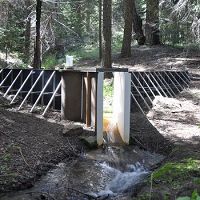MODELS
Critical zone currencies have consequences for climate, ecology (terrestrial-to-riverine-to-coastal ocean), and human welfare. A broad model framework is needed to guide data collection and analysis in our four focal questions, to synthesize the data into a self-consistent framework, and to project how the critical zone and its currencies will change with climate and landuse.
Modelling News

FEATURED
CZ colleagues: Please contact us about proposals for NSF’s CZ Collaborative Network, due 02 Dec 2019
08 Jul 2019 - CZO will end Nov 2020, succeeded by the “CZ Collaborative Network”. Let’s explore how the CZ community can build upon the CZOs via new NSF proposals.

Water Resources Research Special Collection: Concentration-discharge relations in the critical zone
30 Oct 2017 - Water Resources Research published a new special collection in September 2017 featuring concentration-discharge research from multiple CZOs.

EOS: Taking the Pulse of the Earth’s Surface Systems
04 Dec 2015 - Taking the Pulse of the Earth's Surface Systems In September of 2014, Laurel Larsen (UC Berkley), Elizabeth Hajek (Penn State), and others...

Using a CZO network to explore the architecture, dynamics and evolution of the Critical Zone
03 Nov 2014 - The US CZO National Office has organized a webinar on December 8, 2014 at 11AM - 12:30 PM ET.
Bottom-up model predicts depth to fresh bedrock under hillslopes
16 May 2014 - University of California, Berkeley, geologist William Dietrich pioneered the application of airborne LIDAR – light detection and ranging...

Reactive Transport Modeling Survey – Community Needs for Biogeochemical Studies
08 Apr 2014 - Reactive Transport Modeling Survey – Community Needs for Biogeochemical Studies The below survey is designed by Alexis Navarre-Sitchler, Kate...
AWESOM
Atmospheric, Watershed, Ecological, Stream and Ocean Model
Modeling long-term and large-scale consequences of CZ dynamics in the context of changes in climate, land use, and water mgmt.
Explore Further
